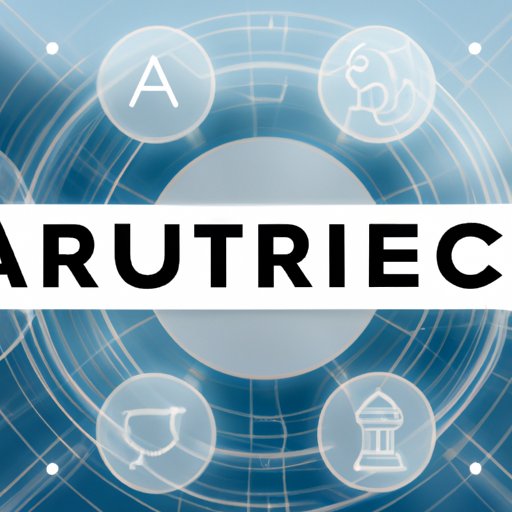Introduction
Artificial Intelligence (AI) is a branch of computer science that focuses on creating intelligent machines capable of performing tasks that would normally require human intelligence. AI has become increasingly popular over the last few years, with applications being used in virtually every industry. In this article, we will explore where AI is being used today, from automation in the workplace to healthcare, retail, security, and education.
Automation in the Workplace: How AI is Transforming Business Processes
AI automation is becoming increasingly popular in the workplace. It can be used to automate mundane tasks such as data entry, customer service, and more. The goal is to reduce manual labor and increase efficiency by allowing machines to take over time-consuming tasks. There are a number of potential benefits to using AI automation in the workplace, including cost savings, increased productivity, and improved accuracy.
For example, AI can be used to automate customer service inquiries. Instead of having a team of customer service representatives answer the same questions over and over again, an AI chatbot can be programmed to respond to common inquiries. This allows customer service representatives to focus on more complex issues, while the chatbot handles the simpler inquiries. AI can also be used to automate mundane tasks such as data entry and analysis, which can help businesses save time and money.

Healthcare and AI: Exploring the Possibilities
AI holds a great deal of promise for the healthcare industry. AI can be used to diagnose diseases, analyze medical images, and even assist in surgery. AI can also be used to automate administrative tasks such as scheduling appointments or processing insurance claims. The potential applications of AI in healthcare are vast, and the technology is already being used in many different ways.
For example, AI is being used to analyze medical images such as X-rays and CT scans. AI algorithms can be trained to detect abnormalities in these images, reducing the amount of time it takes for a diagnosis to be made. AI can also be used to analyze patient records and identify patterns that could indicate diseases or conditions. This information can then be used to provide personalized treatments for patients.
However, there are still some challenges that must be overcome before AI can become commonplace in healthcare. For example, AI algorithms must be trained using large amounts of data, which can be difficult to obtain in the healthcare industry due to privacy concerns. Additionally, AI systems must be able to explain their decisions, which is a challenge that is still being worked on.

AI in Retail: Leveraging Machine Learning for Customer Experience
AI is also being used in the retail industry to improve the customer experience. AI can be used to personalize product recommendations, automate marketing campaigns, and even help customers find what they’re looking for. By leveraging machine learning, retailers can gain valuable insights into customer behavior and preferences, which can be used to deliver a better shopping experience.
For example, AI can be used to personalize product recommendations based on past purchases or browsing history. This can help customers find items that they may not have considered previously, and can lead to increased sales. AI can also be used to automate marketing campaigns, such as sending out emails or ads based on customer preferences. This can help retailers reach the right customers at the right time.

Security and AI: How Artificial Intelligence is Changing Cybersecurity
AI is also being used in cybersecurity to protect organizations from cyberattacks. AI can be used to detect suspicious activity, block malicious websites, and even respond to threats in real-time. By leveraging advanced machine learning algorithms, AI can detect patterns in network traffic that may indicate a potential attack. AI can also be used to scan for vulnerabilities in systems and networks, helping organizations identify and address security risks before they become major issues.
For example, AI can be used to detect suspicious behavior such as login attempts from unusual IP addresses. AI can also be used to monitor network traffic for malicious activity, such as malware downloads or attempts to access confidential data. These types of activities can be flagged and blocked in real-time, protecting organizations from potential cyberattacks.
Exploring AI in Education: Can Machines Make Us Smarter?
AI is also being used in education to help students learn more effectively. AI can be used to create personalized learning experiences, automate grading, and even provide tutoring assistance. By leveraging AI, educators can create more engaging and effective learning environments for their students.
For example, AI can be used to create personalized learning plans for students. AI algorithms can analyze a student’s performance and adjust the content and difficulty level accordingly. This can help ensure that students are always challenged and engaged in their learning. AI can also be used to automate grading, freeing up instructors’ time so they can focus on other aspects of teaching.
Conclusion
In conclusion, AI is being used in a variety of industries today, from automation in the workplace to healthcare, retail, security, and education. AI offers a number of potential benefits in each of these areas, from cost savings to improved customer experience. However, there are still challenges that must be overcome before AI can become commonplace in these industries. Nevertheless, the future of AI looks bright, and it is sure to play an increasingly important role in our lives in the years to come.
(Note: Is this article not meeting your expectations? Do you have knowledge or insights to share? Unlock new opportunities and expand your reach by joining our authors team. Click Registration to join us and share your expertise with our readers.)
